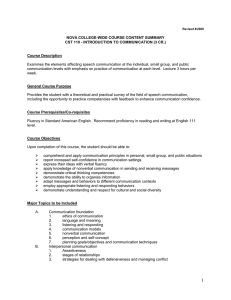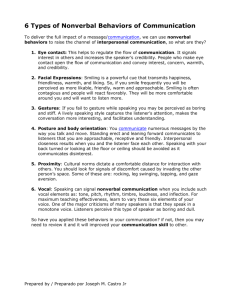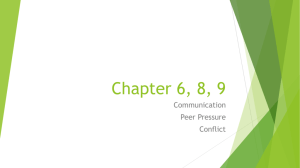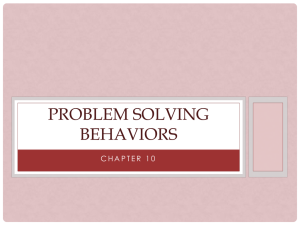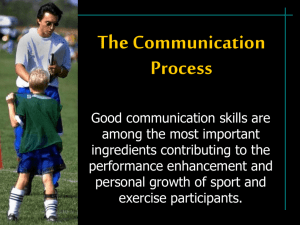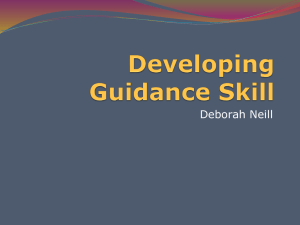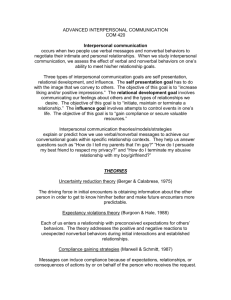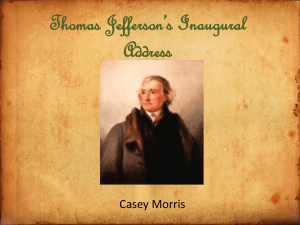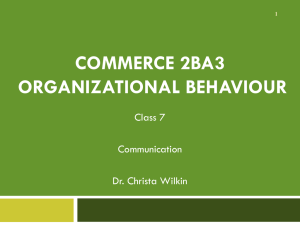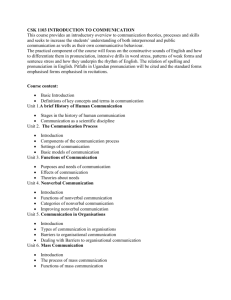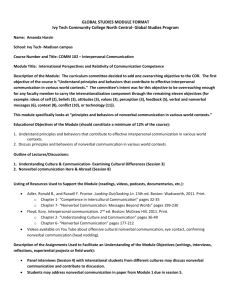Final Exam Review
advertisement
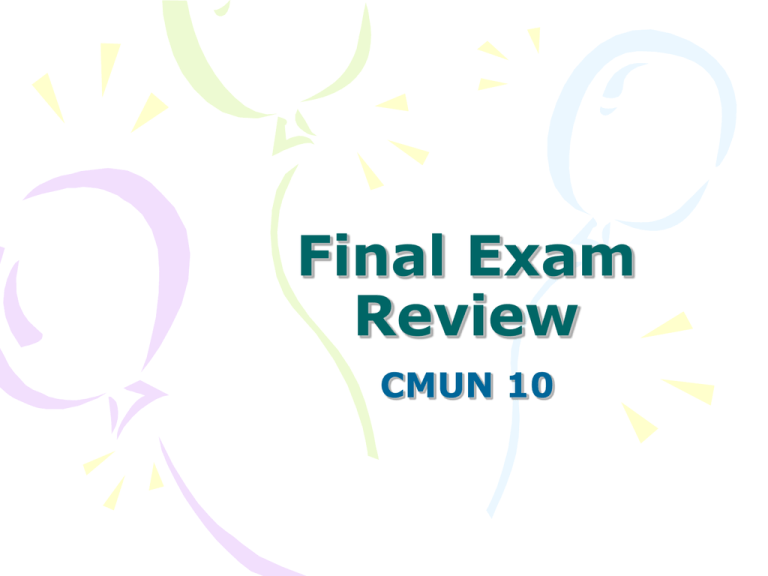
Final Exam Review CMUN 10 • What is Communication? • What is Group Communication? • What is Meta Communication? • What is Communication? – is a dynamic, always changing process – You cannot not communicate • What is Small Group Communication? – Interaction among a small group of people who share a common purpose or goal, who feel a sense of belonging to the group, and who exert influence on one another • What is Meta Communication? Communication about communication • What are the types of small groups? What are the types of small groups? • Primary: Fulfills basic needs – Family – Friends • Secondary: To accomplish a task/goal – – – – Problem Solving/Decision Making Study Therapy/Self Help Committee • Ad Hoc • Focus • Quality Circle • What are the leadership styles as mentioned in lecture and textbook? -Define behaviors of each style Leadership Styles • Autocratic/controller • Laissez-faire • Democratic leadership • Type X The Performer • Type Y The Transformer • Task vs. Maintenance Theory • Traits/Leadership • Situational leadership • Systems Theory • Functional Theory of Leadership • Rules Theory T/F: Decision making groups are usually formed in order to resolve issues or overcome some unsatisfactory situation. FALSE • Decision making group: –purpose is to make a choice among several alternatives –Decision making task is significant and different than problem solving –May also have the problem solving task as part of the group assignment What is reflective thinking? Reflective Thinking The Traditional Problem Solving Approach Identify and Define the Problem: · Is/Is Not Analysis (p. 231) · Journalistic questions o Who/what/when/why/where/how Analyze the Problem · Force Field Analysis · 6M Analysis Generate Possible Solutions · Select the Best Solution or a · Combination of Solutions Evaluate the Solutions - Pros/Cons Test and Implement the Solution Action Chart - Flow Chart T/F 1. The face is the most important area of nonverbal communication for revealing emotions 2. Regulators are nonverbal behaviors that help to control the flow of conversation between others and ourselves. TRUE 1. The face is the most important area of nonverbal communication for revealing emotions – 2. Eye contact functions to provide cues about thought processes, seeks feedback from others, signals when the communication channel is open Regulators are nonverbal behaviors that help to control the flow of conversation between others and ourselves. • What are the parts of the Communication Model –define each Model of Communication T/F • Low status members only talk to low status members FALSE • Low status members only talk to high status members • High status members rarely talk to low status members, and almost always with each other only. T/F • Group goals and individual goals are always compatible FALSE • Group goals and individual goals are always compatible – Groups may want a particular goal, but individuals can derail a group goal by using individual roles and behaviors (see text) Power Bases • What are the types of power? Power Bases • What are the types of power? – – – – – Legitimate: Elected/Hired Referent: Being well liked Expert: Knowledge/information Reward: Gives reward for good behavior Coercive: Punisher Define • Group Think Define • Group Think: A type of thought exhibited by group members who try to minimize conflict and reach consensus without critically testing, analyzing, and evaluating ideas • What is the difference between a team and a group? T/F An Ad Hoc Committee disbands when it completes a task. TRUE An Ad Hoc Committee disbands when it completes a task. T/F • Individualistic cultures value individual recognition and rights more than group or team recognition and rights – while Collectivist Cultures recognize the group over the individual rights. • What are the five stages of group development? • • • • • Forming Storming Norming Performing Mourning • What are the types of conflict? What are the types of conflict? – Pseudo: Misunderstanding • Needs clarification of perceptions – Ego: Individual believes being attacked or personalities clash • Employ active listening • Express concerns freely – Simple: Disagreement over action to take • Listen & clarify Which of the following list is not one of the Conflict Management Principles A. Separate the people from the problem B. Focus on shared interests C. Generate many options to solve problems D. Understand that perception plays no role in conflict management E. Base decisions on objective criteria • What is a focus group? • What is a focus group? – a group that is meeting to discuss a particular topic so that the group’s leaders can better understand how the individuals view that topic. T/F • Quality Circles improve the quality of services and products for organizations FALSE • Quality Circles stress individual department/team success over organizational success T/F • The Fishbone Diagram is an analysis tool that charts the causes and effects of a problem or outcome. TRUE • The Fishbone Diagram is an analysis tool that charts the causes and effects of a problem or outcome. That’s it! See you next week
